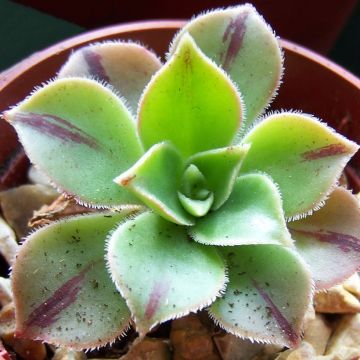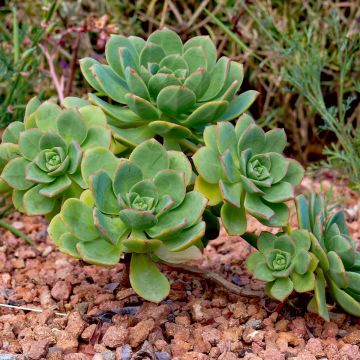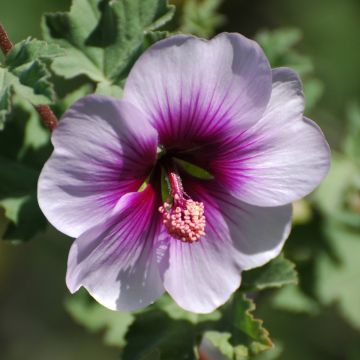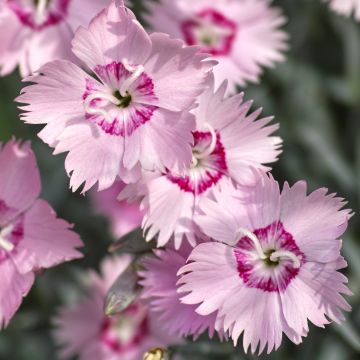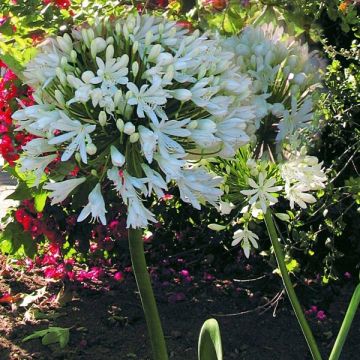Shipping country and language
Your country of residence may be:
Your country of residence is:
For a better user experience on our website, you can select:
Your shipping country:
Andorra
Austria
Belgium
Bulgaria
Canada
Chile
Croatia
Cyprus
Czechia
Denmark
Estonia
Finland
France
Germany
Greece
Hungary
Iceland
Ireland
Italy
Latvia
Lithuania
Luxembourg
Malta
Monaco
Netherlands
Poland
Portugal
Romania
Slovakia
Slovenia
Spain
Sweden
Switzerland
United Kingdom
We only deliver seed and bulb products to your country. If you add other products to your basket, they cannot be shipped.
Language:
French
German
Spanish
English
My Account
Hello
My wish lists
Plantfit
Log in / Register
Existing customer?
New customer?
Create an account to track your orders, access our customer service and, if you wish, make the most of our upcoming offers.


Aeonium arboreum Cornish Tribute - Aéonium en arbre
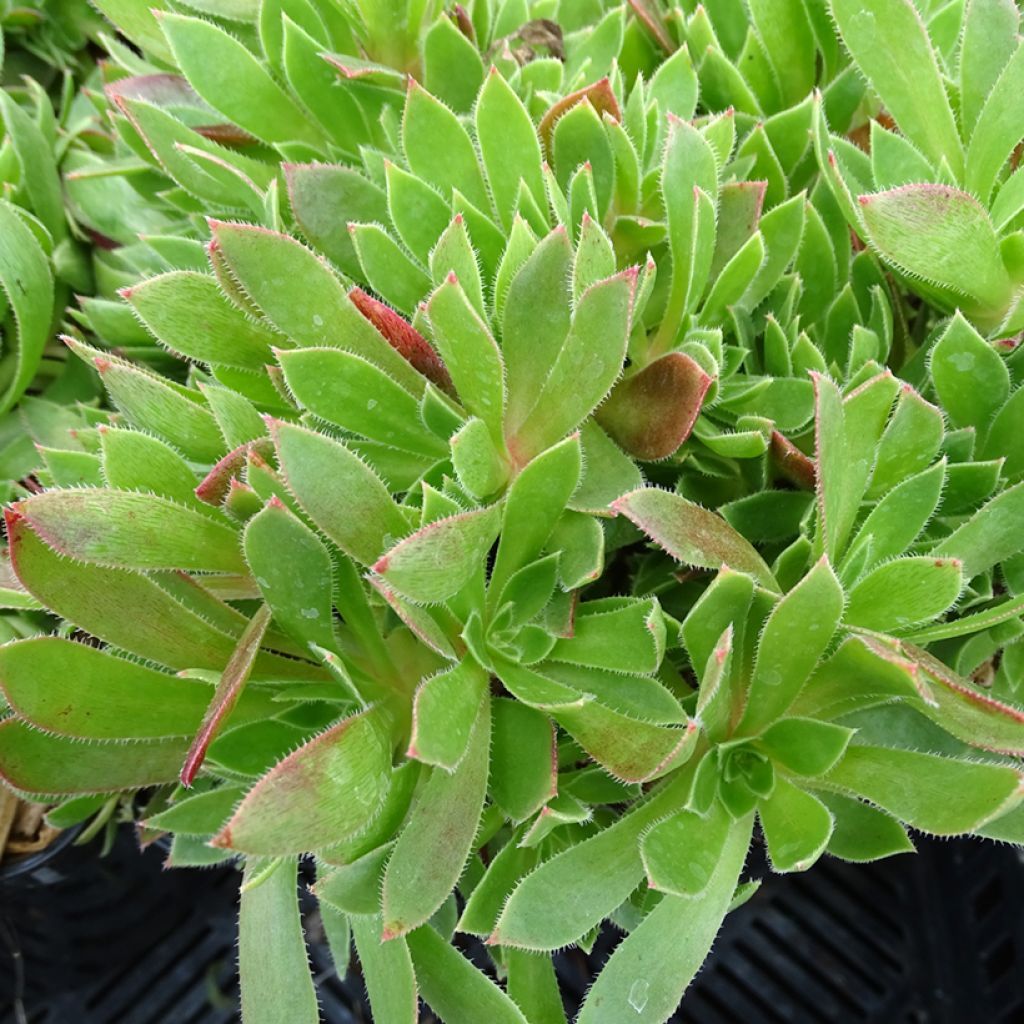

Aeonium arboreum Cornish Tribute - Aéonium en arbre


Aeonium arboreum Cornish Tribute - Aéonium en arbre
Aeonium arboreum Cornish Tribute
Aeonium arboreum Cornish Tribute
Tree Houseleek
Why not try an alternative variety in stock?
View all →Order in the next for dispatch today!
Dispatch by letter from €3.90.
Delivery charge from €5.90 Oversize package delivery charge from €6.90.
More information
This item is not available in your country.
Schedule delivery date,
and select date in basket
This plant carries a 24 months recovery warranty
More information
We guarantee the quality of our plants for a full growing cycle, and will replace at our expense any plant that fails to recover under normal climatic and planting conditions.
From €5.90 for pickup delivery and €6.90 for home delivery
Express home delivery from €8.90.
Does this plant fit my garden?
Set up your Plantfit profile →
Description
Aeonium arboreum 'Cornish Tribute' is a horticultural hybrid with magnificent aesthetics. This small succulent plant forms a perfect dome of imbricate rosettes with a very graphic geometric appearance. Closely packed together, these rosettes turn red in the sun while maintaining a green centre, creating a superb contrast. Almost twice as wide as it is tall, this small Aeonium does not exceed 25cm (9.8in) in height, resembling a hedgehog with its almost impenetrable bicoloured foliage. Frost-sensitive, it needs to be protected during winter in most parts of France or in milder climates. Resistant to drought, it forms very attractive decorative pots.
Aeoniums are succulent plants belonging to the Crassulaceae family, which includes about 1500 species, many of which are of ornamental interest. Everyone knows the popular Kalanchoe with their vibrant flower bouquets that brighten up our interiors, or Echeveria which have been successful in the art of mosaic, while Sedums are essential for green roofs... We could also mention the friendly Sempervivums, or Houseleeks, which are part of our spontaneous flora despite their exotic appearance, and many others.
Aeoniums have a family resemblance that makes them easy to identify. With 'Cornish Tribute', we have a fairly typical hybrid. Obtained by the Penberth nursery in the United Kingdom (Claire Batten and Jeff Rowe), this Aeonium finished in the top 20 finalists of the new plant competition at the prestigious Chelsea Flower Show 2012 organized by the RHS (Royal Horticultural Society). This major event in the world of ornamental plants crowns deserving varieties, and 'Cornish Tribute' is one of them, with its remarkable aesthetic qualities.
Derived from a cross between Aeonium simsii, a small montane species known to be the hardiest, and another species, 'Cornish Tribute' remains sensitive to frost like most others... Its originality lies instead in the colour of its foliage, which is not purple or black like many others, but adorns itself with a beautiful reddish-orange shade. Tending to turn green in winter due to reduced brightness, it quickly regains its colours in the warmer season, with the rosette centres remaining green while the outer leaves turn an intense red that deepens as the season progresses. This small Aeonium then forms a very geometric dome 20 to 25cm (7.9 to 9.8in) in height and 45cm (17.7in) in width, composed of a multitude of bicolored rosettes clustered together, resembling a true vegetal hedgehog! With a relatively fast growth, this plant produces new rosettes abundantly throughout the warm season.
In the milder climates it is advisable to plant this Aeonium in full sun, in poor and well-drained soil, as it will not tolerate having its roots in water during winter! It may even be necessary to protect it with a non-woven fabric if the temperature drops a few degrees below 0°C (32 °F). This applies to the mildest zones in France, as elsewhere, it will be imperative to overwinter it in a frost-free room with as much light as possible. Fortunately, like many other species, it is resistant to drought and lends itself particularly well to container cultivation due to its compact habit. You will then obtain a superb decorative pot to place on your balcony or terrace, or even in the garden by burying the pot in a bed during the season to create the illusion of planting in open ground!
Aeoniums are a delight for succulent plant enthusiasts, and this small hybrid will enchant them with its geometric foliage that approaches perfection. Planted in a pot, it will blend perfectly into a contemporary environment, where the purity of its forms will compensate for the rarity of its flowering. In climates mild enough to accommodate it in open ground, such as on the French Riviera, it can be a part of a dry garden, associated with the pads of the Opuntias, some of which are hardier than it. In colder climates during winter, there is nothing to prevent you from "cheating" and placing its pot in open ground to create the illusion that it is growing there, as is done in some botanical gardens. You can then create an exotic scene by adding plants that are hardier than it, which can withstand winter outdoors, such as the famous Yucca rostrata,, or Cylindropuntia imbricata, even more cold-resistant and remarkable for its unique graphic habit. The remarkable Aloe striatula, probably the hardiest of the genus, will also be a perfect companion.
Aeonium arboreum Cornish Tribute in pictures


Plant habit
Foliage
Botanical data
Aeonium
arboreum
Cornish Tribute
Crassulaceae
Tree Houseleek
Cultivar or hybrid
Other Aeonium
Planting and care
Aeonium arboreum 'Cornish Tribute', highly resistant to heat and drought, requires a light, well-drained, sandy, even poor soil. Plant it in spring after the last frost in mild coastal or hot and dry climates. Pot planting is possible throughout the year, obviously protected from frost. It thrives in the sun and tolerates partial shade south of the Loire in summer, and likes to have warm roots. It is sensitive to frost and can only be planted outdoors in very mild climates, with occasional and not intense frost, while protecting it. Overwinter this plant in an unheated but frost-free and, importantly, very bright location. Water moderately from autumn to spring, and sparingly in summer. Remove faded inflorescences and dead branches.
Planting period
Intended location
Care
This item has not been reviewed yet - be the first to leave a review about it.
Mediterranean perennials
Haven't found what you were looking for?
Hardiness is the lowest winter temperature a plant can endure without suffering serious damage or even dying. However, hardiness is affected by location (a sheltered area, such as a patio), protection (winter cover) and soil type (hardiness is improved by well-drained soil).

Photo Sharing Terms & Conditions
In order to encourage gardeners to interact and share their experiences, Promesse de fleurs offers various media enabling content to be uploaded onto its Site - in particular via the ‘Photo sharing’ module.
The User agrees to refrain from:
- Posting any content that is illegal, prejudicial, insulting, racist, inciteful to hatred, revisionist, contrary to public decency, that infringes on privacy or on the privacy rights of third parties, in particular the publicity rights of persons and goods, intellectual property rights, or the right to privacy.
- Submitting content on behalf of a third party;
- Impersonate the identity of a third party and/or publish any personal information about a third party;
In general, the User undertakes to refrain from any unethical behaviour.
All Content (in particular text, comments, files, images, photos, videos, creative works, etc.), which may be subject to property or intellectual property rights, image or other private rights, shall remain the property of the User, subject to the limited rights granted by the terms of the licence granted by Promesse de fleurs as stated below. Users are at liberty to publish or not to publish such Content on the Site, notably via the ‘Photo Sharing’ facility, and accept that this Content shall be made public and freely accessible, notably on the Internet.
Users further acknowledge, undertake to have ,and guarantee that they hold all necessary rights and permissions to publish such material on the Site, in particular with regard to the legislation in force pertaining to any privacy, property, intellectual property, image, or contractual rights, or rights of any other nature. By publishing such Content on the Site, Users acknowledge accepting full liability as publishers of the Content within the meaning of the law, and grant Promesse de fleurs, free of charge, an inclusive, worldwide licence for the said Content for the entire duration of its publication, including all reproduction, representation, up/downloading, displaying, performing, transmission, and storage rights.
Users also grant permission for their name to be linked to the Content and accept that this link may not always be made available.
By engaging in posting material, Users consent to their Content becoming automatically accessible on the Internet, in particular on other sites and/or blogs and/or web pages of the Promesse de fleurs site, including in particular social pages and the Promesse de fleurs catalogue.
Users may secure the removal of entrusted content free of charge by issuing a simple request via our contact form.
The flowering period indicated on our website applies to countries and regions located in USDA zone 8 (France, the United Kingdom, Ireland, the Netherlands, etc.)
It will vary according to where you live:
- In zones 9 to 10 (Italy, Spain, Greece, etc.), flowering will occur about 2 to 4 weeks earlier.
- In zones 6 to 7 (Germany, Poland, Slovenia, and lower mountainous regions), flowering will be delayed by 2 to 3 weeks.
- In zone 5 (Central Europe, Scandinavia), blooming will be delayed by 3 to 5 weeks.
In temperate climates, pruning of spring-flowering shrubs (forsythia, spireas, etc.) should be done just after flowering.
Pruning of summer-flowering shrubs (Indian Lilac, Perovskia, etc.) can be done in winter or spring.
In cold regions as well as with frost-sensitive plants, avoid pruning too early when severe frosts may still occur.
The planting period indicated on our website applies to countries and regions located in USDA zone 8 (France, United Kingdom, Ireland, Netherlands).
It will vary according to where you live:
- In Mediterranean zones (Marseille, Madrid, Milan, etc.), autumn and winter are the best planting periods.
- In continental zones (Strasbourg, Munich, Vienna, etc.), delay planting by 2 to 3 weeks in spring and bring it forward by 2 to 4 weeks in autumn.
- In mountainous regions (the Alps, Pyrenees, Carpathians, etc.), it is best to plant in late spring (May-June) or late summer (August-September).
The harvesting period indicated on our website applies to countries and regions in USDA zone 8 (France, England, Ireland, the Netherlands).
In colder areas (Scandinavia, Poland, Austria...) fruit and vegetable harvests are likely to be delayed by 3-4 weeks.
In warmer areas (Italy, Spain, Greece, etc.), harvesting will probably take place earlier, depending on weather conditions.
The sowing periods indicated on our website apply to countries and regions within USDA Zone 8 (France, UK, Ireland, Netherlands).
In colder areas (Scandinavia, Poland, Austria...), delay any outdoor sowing by 3-4 weeks, or sow under glass.
In warmer climes (Italy, Spain, Greece, etc.), bring outdoor sowing forward by a few weeks.

